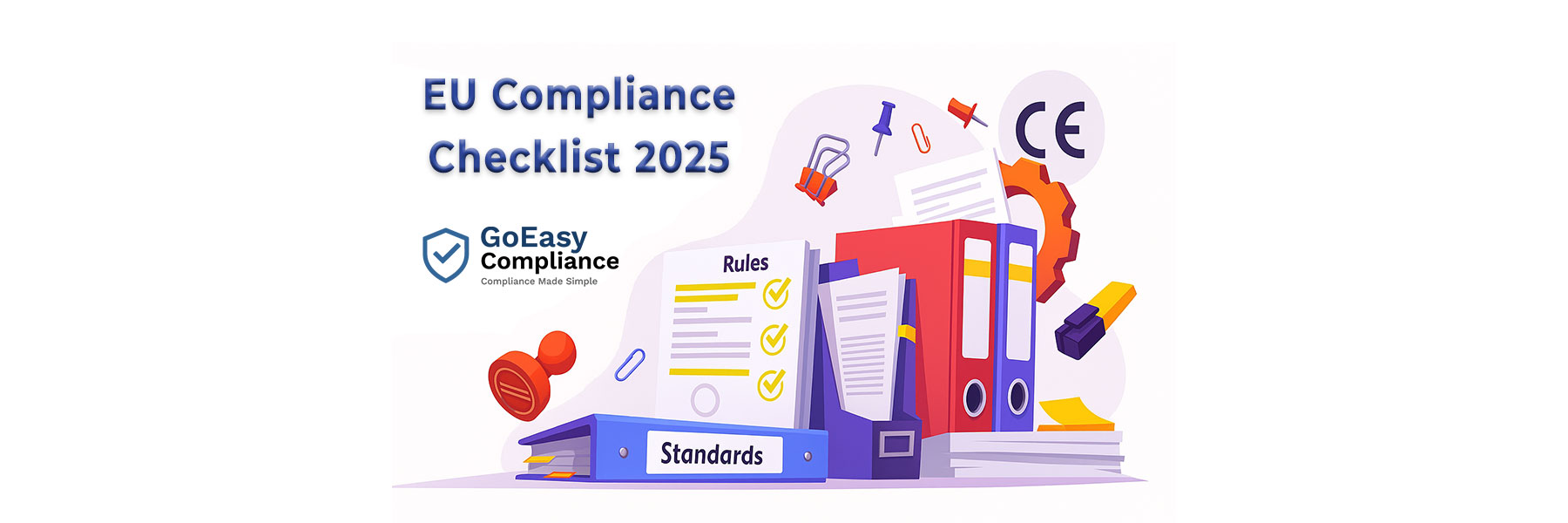
Bringing a product to the European market means more than just selling it. It means taking full responsibility for its safety, conformity, and documentation.
Whether you are a manufacturer or an importer, understanding the EU product compliance checklist is essential to avoid costly delays, recalls, or legal issues.
This 2025 checklist provides a clear overview of what every business should verify before, during, and after placing products on the EU market, and shows where expert help can make the process faster and safer.
Before Placing Products on the Market
1. Identify Applicable EU Requirements
Every product must meet one or more EU directives or regulations, depending on its nature and function.
These laws define the essential health, safety, and environmental protection requirements a product must satisfy.
Because legislation often overlaps, many companies rely on professional consultants to confirm which framework applies to their products before moving forward.
2. Appoint an EU Authorized Representative (If Outside the EU)
If you are a non-EU manufacturer, you must appoint an EU-based Authorized Representative to handle compliance documentation and communication with authorities.
This ensures your company remains accountable within the EU market and can respond quickly to any compliance inquiries.
3. Verify Product Safety and Performance
Before selling, verify that your product:
- Meets all essential safety and performance requirements
- Has been tested according to relevant EU standards
- Includes appropriate warnings and instructions
Testing and documentation are critical for proving conformity and help build trust with distributors and customers alike.
Product and Documentation Requirements
4. Conduct the Conformity Assessment
Each product must undergo a conformity assessment before being placed on the market.
This process demonstrates that the product complies with all applicable legislation.
For low-risk items, manufacturers may self-assess. For higher-risk products, a Notified Body may need to verify compliance.
5. Prepare the Technical Documentation (Technical File)
Manufacturers and importers must maintain a technical file containing all relevant product information, including:
- Product description, drawings, and design data
- Applied directives, regulations, and standards
- Test reports and risk assessments
- Declaration of Conformity draft
This documentation must be stored for at least 10 years after the product has been placed on the market.
6. Draft and Sign the Declaration of Conformity (DoC)
The Declaration of Conformity is a legally binding document stating that the product complies with all relevant EU legislation.
It should include:
- Manufacturer’s name and address
- Product identification
- References to applicable directives and standards
- Signature of the responsible person
Failure to provide an accurate DoC can result in product withdrawal or fines.
7. Apply Correct Labeling and Marking
Proper labeling ensures traceability and transparency.
Each product must display:
- CE marking, if applicable
- Manufacturer and importer details
- Product identification (model, batch, or serial number)
- Safety instructions and warnings in the local language
Additional labels (e.g., WEEE, energy, or recycling symbols) may be required for specific categories.
After the Product Is on the Market
8. Cooperate with Market Surveillance Authorities
EU authorities routinely check products to ensure they comply with safety and labeling laws.
Manufacturers and importers must be ready to:
- Provide documentation on request
- Support traceability investigations
- Take corrective actions if needed
Having your documentation organized and accessible makes this process smoother and protects your brand reputation.
9. Monitor Regulation Changes and Product Updates
Compliance doesn’t end once your product is sold.
Regulations evolve, and your product’s design or supply chain may change over time.
Regularly review:
- Updates to EU laws and harmonized standards
- Modifications in raw materials or components
- Feedback from customers or distributors
Ongoing monitoring ensures your product remains compliant long-term.
10. Take Immediate Action if a Product Is Found Unsafe
If a product presents a risk to consumers, manufacturers must:
- Inform authorities through the EU Safety Gate (RAPEX) system
- Notify customers and distributors
- Implement recalls or corrective actions promptly
Being proactive not only avoids penalties but also strengthens consumer trust in your brand.
EU product compliance is not just a legal step; it’s a commitment to safety, quality, and transparency.
Following this checklist will help importers and manufacturers understand their core responsibilities and prepare for successful market access.
For detailed guidance, documentation review, or personalized compliance support, GoEasy Compliance offers professional solutions that make compliance simple, reliable, and efficient.
Ready to bring your product to market with confidence?
Contact GoEasy Compliance today for expert support.

